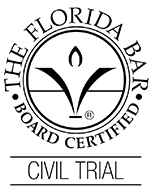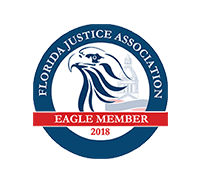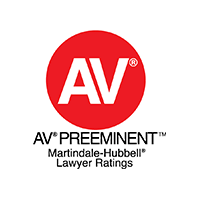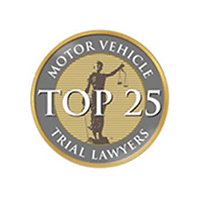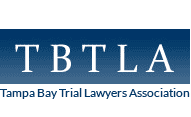As you navigate the painful, stressful and often chaotic aftermath of your automobile accident, one of the most important questions you face is: What is my case worth? If you type this question into Google, you will find a lot of answers stating: It depends. This is because the actual answer to your question is two-fold.
First, your case is worth the amount of money that the evidence supports. Second, no matter what the evidence supports, your case is only worth the amount of money that is available to recover from the at-fault party. For example, if your damages total $1 million, but there is only $10,000 available, then your automobile accident case is ultimately worth $10,000.
Who Decides What My Case is Worth?
A jury. If your case proceeds to trial, the jury will ultimately determine the amount of damages, if any, to award to you. Although many cases settle, the settlement values of cases are driven by what both sides anticipate a jury could award for that case. It’s important to understand that it is not your attorney’s decision as to what your case is worth. If it were, our attorneys would break the bank on every case. Instead, the value of your case is capped at what a jury could award to you, in reflection of the evidence presented at the trial.
If the jury awards a verdict that is greater than what the evidence supports, the law enables the judge to decrease the verdict, and judges are not afraid to do this. In fact, they do it all the time. Unfortunately, the defendant’s legal team is also aware of this factor. So, any settlement value of your case will never exceed the value the evidence supports. Usually, the settlement value is a fraction of the total value.
What Type of Claim Should I Have After My Automobile Accident?
Typically, your claim against the other driver will be for negligence. To prevail, you need to prove the other driver owed you a duty of care and ultimately breached this duty by engaging in negligent actions or behaviors that led to the collision.In evaluating what your case is worth, you must consider the strength of your negligence claim. To do so, there are three general overarching considerations: (1) Liability; (2) Causation; and (3) Damages.
Liability encompasses whether the other driver was negligent for your automobile accident. In addition, you need to examine if another individual or business should also be held responsible for the automobile accident. The potential liability of multiple parties can increase the insurance coverage or personal assets available to pay you for your case. Causation is the legal requirement that the other driver’s negligence had to be the cause of recoverable damage. Damages refer to the categories of recovery Florida law permits in your case. The purpose of damages in a negligence case is to put you in the position you were in before the accident.
Some people view victims of automobile accident cases as looking to get ahead when they bring a lawsuit to seek recovery for their damages. However, it is important to remember that this is inaccurate because the law only provides for damages to make you whole by attempting to put you in as good, or as close to as good as possible, of a position as you would have been in had you not been in the automobile accident crash.
Liability
Who Can Be Held Liable for My Automobile Accident?
The most obvious answer is the driver who hit you or caused you to crash. However, there are other potentially liable individuals and entities. In Florida, if an at-fault driver’s vehicle is owned by another party, then the owner can also be held responsible for your damages. Of course, this is only if the driver had the owner’s permission to operate the vehicle. For example, if you are hit by a 17-year-old teenager who is driving with a parent’s permission, then the parent could also be liable.
This is another common scenario: If a driver hits you while he or she is acting within the course and scope of their employment, then the employer(s) could also be liable depending on the negligent employee’s actions. Employers often try to avoid being on the hook for the negligence of their employees by arguing the employee was not within the course and scope of employment at the time of the automobile accident. This scenario is a perfect example of why evidence is so important and how it can determine the value of your case.
If an employer raises this argument, then your attorney can present evidence that proves the driver was acting within the course and scope of their employment at the time of the automobile accident, thereby holding both the employee and the employer liable. But what happens if the other driver dies from the accident or before settlement negotiations or litigation? If this happens, your case does not go away but instead will be brought against his or her estate.
How Do I Know if the Other Driver Was Negligent?
A good attorney is important to ensure the necessary evidence is procured and presented to the jury. Traffic law violations can be considered evidence of negligence. Other common examples of negligence include distracted driving, such as rear-ending someone at a stop sign, or driving too fast for what is appropriate under the weather or road conditions, like excessive speeding in a torrential downpour. Another example of negligence would be if the other driver was using his or her cell phone leading up to the accident.
In a lawsuit, attorneys will use a process called discovery to find out if the phone was in use at the time of or just before the accident. If it was in use, this could be evidence that the driver was distracted, and therefore, negligent. Whether or not the other driver is deemed negligent depends on the evidence, which includes analyzing both the at-fault driver and your credibility.
In other words, it matters if the jury likes and believes you in comparison to the at-fault driver. When the evidence is in dispute, the credibility of both parties and the witnesses becomes critical.
Do I Still Have a Case If I Was Also Negligent?
Yes. Florida is a “comparative fault” state, meaning a person is only responsible for his or her share of fault in an accident. If the other driver exhibited negligence, but you also behaved negligently (which the law describes as “comparative negligence”), then the defendant may not be liable for all your damages. For instance, if a jury assigns 80% negligence to the other driver and 20% negligence to you, then any damages awarded to you could be reduced by 20%.
So, in this example, if you obtain a verdict for $100,000, it could be reduced to $80,000. The law in Florida holds individuals responsible for the damages caused by their negligence, so even if the other driver was only 1% at fault, and you were 99% at fault but damaged in the amount of $100,000 from the accident, you could still technically recover $1,000. As you can see, the higher the percentage of fault attributed to the other party, the greater the value of your case will be.
As a general rule, there is not a bar to your recovery if you are more at fault than the other driver. An exception to this general rule arises if you were drinking at the time of the accident. If the jury learns you were impaired or had a blood or breath alcohol level of .08 percent or higher, and subsequently found you more than 50% at fault, then you would not recover any damages. On the other hand, if the other driver was drinking, there is a greater likelihood of proving the other driver was negligent in causing the accident.
An example of comparative negligence that the other driver’s attorney or insurance adjuster may try to explore is whether you were wearing your seat belt at the time of the automobile accident. This factor is incredibly important and can determine whether you can maximize the value of your claim. That said, not wearing a seat belt constitutes comparative negligence and could decrease the value of your case.
Another common inquiry is whether you were on your cell phone. If you were, this could be evidence of you being distracted and at fault in some way, which could also decrease the value of your claim.
What if There Were Multiple Cars Involved in the Crash?
When multiple vehicles are involved in a wreck, liability becomes even more contested. Usually, the attorney or insurance adjuster for each driver will claim the other party was at fault (i.e., negligent) in causing the crash. Again, under Florida’s comparative fault system, a party can only be held liable for his or her fault.
To illustrate, let’s say you were in a four-vehicle accident (Vehicle A, Vehicle B, Vehicle C, and your car) and the jury awarded you $100,000 in damages. However, the jury determined that each party was 25% at fault for the collision. The judge would then reduce your verdict by 25% from $100,000 to $75,000. Then, each driver would be responsible for his or her negligence, meaning Vehicle A would owe you $25,000.00, Vehicle B would owe you $25,000.00, and Vehicle C would owe you $25,000.00.
What if One of the Vehicles Had a Defect?
If the evidence shows the presence of a defect in either the driver’s vehicle or your vehicle, then this can impact the value of your case. Let’s start with the driver’s vehicle. If the driver’s vehicle had a defect, his attorney would argue that the driver was not negligent, but instead that the vehicle defect was to blame for the automobile accident. For your case against the driver, the first consideration is whether the defect contributed to the accident.
For example, if the defect is that the driver’s headlights were not working, but the driver rear-ended you at a stop-sign in broad daylight, then the defect did not contribute to the accident and has no impact on your case. If the defect did contribute to the accident, it would be important to determine if the defect resulted from the driver failing to maintain the vehicle (for example, not having the brakes properly maintained), or if the defect resulted from the manufacture or design of the vehicle.
If the other driver failed to maintain the vehicle, then the presence of the defect should not decrease the value of your automobile accident case. In that scenario, the driver’s negligence caused your accident, either from his or her driving or from his or her negligent maintenance of the vehicle, or some combination of the two. On the other hand, if the defect is from the manufacture or design of the vehicle, then it will decrease the value of your automobile accident case against the driver since the driver cannot be held liable for the vehicle defect.
To recover all your damages, you would also need to pursue a remedy against entities other than the other driver, such as the manufacturer of the vehicle. Likewise, if the evidence shows that your vehicle has a defect that contributed to the accident, it could decrease the value of your case against the other driver. If the defect is because you failed to maintain your vehicle properly, then the jury may find you negligent and decrease the damages awarded to you.
Alternatively, if the defect is from the manufacture or design of the car, then the other driver cannot be held liable for that, and you would have to recover from the manufacturer or other potentially liable business entities for the damage caused by the defect.
What Evidence Do I Need When Liability is Disputed?
To identify all the individuals and business entities that can be held responsible for the driver’s negligence, you should hire an experienced and qualified attorney. The attorneys at Dismuke Law have handled thousands of automobile accidents and procured multi-million-dollar verdicts for their clients. This experience enables them to compile the necessary evidence to maximize the value of your case. The lawyers at Dismuke Law can examine this evidence to determine which parties are liable and then develop a litigation strategy that proves the other at-fault parties behaved negligently. The following evidence can be used to establish negligence:
- Witness testimonies
- Surveillance records
- Cellular phone records
- Photographs of the accident scene and vehicles
- Information obtained regarding the vehicles
- Testimony from an accident reconstructionist
The importance of presenting credible and competent evidence that proves the other driver was negligent, and that you were not negligent, cannot be stressed enough.
Damages
In Florida, the types of damages available to you if you are injured in an automobile accident case are generally classified as economic and non-economic damages.
What Are Economic Damages?
The word economic is somewhat self-explanatory. These damages are intended to reimburse you for actual monetary losses, including lost wages and lost earning capacity (past and future), medical expenses (past and future), and, of course, property damage to your vehicle.
Medical Expenses
Let’s start with your past medical bills. If you are injured, you probably went to the doctor after your accident. Although it might surprise you, your initial medical bills are required to be paid, to some degree, by your automobile insurance benefits.
Florida is a no-fault state and requires that all drivers of automobiles (the definition of which does not include motorcycles) carry personal injury protection (PIP) coverage under their automobile insurance plan up to $10,000. So, regardless of fault, you need to submit your medical expenses to your automobile insurance carrier until the PIP benefits are exhausted. Don’t wait to see a doctor either.
You need to see a medical doctor, doctor of osteopathy, chiropractor, or dentist within 14 days of the accident to ensure you receive your full PIP benefits (which is generally 80% of the first $10,000 of medical treatment, and sometimes subject to a deductible). The $10,000 coverage can also be applied toward lost wages, paying out at 60% of your lost wages. Your automobile insurance policy may also have medical payments coverage. You need to check the declarations page of your insurance policy to see if you have med pay, which is an elective coverage available to pay expenses not covered by PIP.
Once your PIP coverage is exhausted, you will have to pay for any ongoing medical treatments you receive as a result of the automobile accident. Be sure to use your health insurance for all necessary treatments, if you have it. If you do not have health insurance, your doctor(s) may accept what is called a letter of protection from your attorney. A letter of protection gives your doctor(s) the right to be paid out of your settlement proceeds or jury award.
In either scenario, the amount awarded to you for your past medicals, whether in a settlement or at trial, does not go to you. Instead, med pay and your health insurance have what is called a “right of subrogation.” This means they are entitled to be paid back for all the medical treatment they paid for that were related to the accident.
Similarly, a doctor who gave you treatment based on a letter of protection would also be entitled to repayment from the proceeds of your settlement or jury award. You do not have to pay your automobile insurance carrier back for the PIP benefits, but these benefits will not be part of any offer made to you by the driver’s attorney or recovered by you after a judge reviews a jury’s verdict on damages.
Fortunately, you can also recover damages that account for your future medical needs. Of course, this means that your attorney needs to consult with a qualified medical expert who can testify on your behalf in court. This expert can explain why your injuries require ongoing medical treatments (either for a certain time or indefinitely, if the injury is permanent), and how much these treatments could cost.
Lost Wages
As to a claim for past lost wages, the time you missed from work as a result of the accident must be uncompensated. If you missed time from work but were compensated fully for it, then you most likely cannot recover for the missed time.
To recover for future unpaid wages or loss of earning capacity, you will most likely need an expert witness known as a life care planner. This expert can evaluate your injury and its permanency, typically by speaking with you, review your pertinent medical records, and discuss your condition with your medical providers. Then, the expert will provide an opinion on whether the injury could limit your ability to work in the future or prevent you from holding gainful employment.
For example, if you are a construction worker and sustain a permanent back injury, the expert may opine that even though you can return to work now, you can no longer work until normal retirement age because of your back injury. If the evidence shows that you have to retire at 60 instead of 65, the five-year loss could potentially be recoverable as future lost earning capacity. The higher the amount of lost past and future wages you have, the greater the value of your case is.
What Are Non-Economic Damages?
Non-economic damages is a legal term that is more commonly known as pain and suffering.Florida law enables you to recover the following non-economic damages:
- Pain and suffering
- Disability or physical impairment
- Disfigurement
- Mental anguish
- Inconvenience
- Loss of capacity for the enjoyment of life
Non-economic damages could comprise the largest portion of the overall value of your case. However, there is no set formula for the jury to apply when awarding non-economic damages. For this reason, the jury’s award will be based on how it views the evidence, which includes, in large part, whether the jury likes you and believes your claim.You can only recover non-economic damages in Florida car crashes (in most cases) if you have a permanent injury. So, again, having appropriate evidence is imperative if you plan to maximize the value of your case with respect to the recovery of non-economic damages.
Typically, to show that you sustained a permanent injury, you will need an opinion from one of your treating doctors that you have reached maximum medical improvement and that you have a permanent injury or condition. When doctors give these opinions, they also provide a disability rating under the applicable medical guidelines for his or her specialty.
The higher the disability rating assigned to your injury or condition, the greater the value of your case.As a generalization, jurors tend to give higher non-economic damage awards when there are long hospitalizations, surgeries (everyone can relate to the painfulness of surgery and associated recovery), visible and extensive scarring, disfigurement, and other noticeable, permanent injuries.
You may hear people throw out a rule of thumb of three times your medicals. What this means is sometimes defense attorneys value your case by making an offer that covers your economic damages and then around 2 to 3 times your economic damages for your non-economic damages. The experienced lawyers at Dismuke Law are confident in their ability to present the evidence in automobile accident cases in the best way possible to maximize the value of the victim’s non-economic damages whether through a settlement with the driver or a jury verdict.
The jury will examine the evidence in your case through the prism of whether the jury likes you and believes you. Attorneys know this, and so the way you present, through the guidance of your attorney, will have an impact on the value of your case. If the insurance adjuster or attorney(s) for the potentially liable parties do not think you make a likable witness, the settlement offers for your case will be less than a more likable witness with a similar case.
Does My Age Matter for the Value of My Case?
Age is going to play a factor in the value of your case, and for a simple reason. Future damages are often calculated based on life expectancy: the younger the person, the longer the life expectancy, the greater the damages that can be recovered.
Are Punitive Damages Ever Available?
Sometimes the facts of a case are so egregious that punitive damages may be available. A situation where this could arise is if the other driver was heavily intoxicated at the time of the accident. Punitive damages are meant to punish, so a jury has the authority to award an extremely large punitive damages award. The applicability of punitive damages are fairly rare, but if the facts of your case support punitive damages, this will increase the value of your case.
There are some issues associated with arguing for punitive damages which are typically applicable if the conduct is, for all intents and purposes, intentional. If the conduct of the other driver is intentional, there may not be insurance coverage available. Also, if the driver were an employee, his or her employer would most likely not be liable for intentional conduct. The attorneys at Dismuke law have experience in helping victims of automobile accidents weigh the evidence to determine whether an award of punitive damages is possible and appropriate for their case.
Does My Spouse Have a Claim Against the Other Driver?
If you are married, your spouse may also have a claim against the negligent driver for what is called loss of consortium. What this means is that your spouse could have a claim for any loss of services, comfort, society, and attention in the past and future caused by the negligence in question. The evidence necessary to support a claim for loss of consortium is typically testimony from the injured spouse, as well as the non-injured spouse, regarding how their lives and relationship have changed after the accident.
Causation
Now that you have the context of understanding what damages you can recover, it is important to remember that you can only recover for the damages caused by the automobile accident.A common argument is that the accident did not cause the medical conditions at issue, and therefore also did not cause the associated lost wages and pain and suffering.
For example, if there are back problems at issue in a case, the defense may argue the accident did not cause the back condition, but instead, the back condition is a result of the normal aging process. This is where evidence is important to examine whether there was a pre-existing complaint of back issues. If an MRI was taken shortly before the automobile accident and there were no herniated discs, and then an MRI after the automobile accident showed herniated discs, then the defense would have a difficult time disputing that the car accident didn’t cause the herniated discs.
What If I Have Pre-Existing Condition?
Even if your automobile accident aggravated a pre-existing condition, you are not without a remedy. If the jury can determine what portion of your condition is aggravation caused by the accident, then you can at least recover for that portion of your injury. But, if the jury cannot separate what was pre-existing and what is the aggravation, then the law requires the jury to award damages for the entirety of the condition.
The attorneys at Dismuke Law have experience presenting evidence that the aggravation cannot be separated from the pre-existing condition, and therefore, the driver should be held responsible for the entire condition. The value of your case increases if the aggravation cannot be separated from the underlying condition.
Is There Money to Cover Your Damages?
At this point, you may be thinking that you have a pretty good idea as to what the value of your case is. But you are missing one key piece to the puzzle! That piece is whether there is a sufficient pot of money available to pay you for what your case is worth.
Let’s say you were in an automobile accident with Mrs. Smith. The evidence shows that Mrs. Smith was 100% at fault and that her negligence caused you permanent injuries worth around $500,000. However, Mrs. Smith lives on a fixed income consisting only of social security, and she only has the minimum amount of $10,000 in bodily injury coverage. Under these facts, your case is most likely only worth $10,000 (not including your PIP benefits and any med-pay). Plus, Mrs. Smith’s insurance company will demand a full release of Mrs. Smith in order to settle with you.
Even if you do not sign a full release, you most likely cannot collect from Mrs. Smith since she doesn’t have any assets. There is simply no point in pursuing litigation. You have a right to get a verdict against the person who injures you, but it is not always the best financial decision.
Does Every Florida Driver Carry Bodily Injury Insurance?
Unfortunately, the answer to this question is no. Florida does not require every driver to carry bodily injury coverage. However, if a driver does not carry at least $10,000, then they are considered self-insured and must post a bond for the amount. In this scenario, you need to obtain a judgment against the driver. The court will then send an order to the Department of Highway Safety and Motor Vehicles that the deposit be paid to satisfy the judgment.
If there is not a deposit on hand with the Department, it will contact the driver to pay the required bodily injury limit of $10,000. If the driver does not do this within 10 days, his or her driving privileges and all registrations will be revoked and will not be reinstated until you have been paid the minimum $10,000.
Can I Recover from Anyone Besides the Driver’s Insurance?
There are some other avenues for pursuing payment besides what the driver has under his or her insurance policy coverage. Under the dangerous instrumentality doctrine, you may be able to recover under the owner’s automobile insurance policy if the driver was driving with the owner’s permission.
If the negligent driver was driving within the course and scope of his or her employment, then you most likely will have access to the employer’s insurance coverage. Typically, businesses have larger coverage amounts than individual drivers. If there was an employer in the Mrs. Smith scenario above, and she was operating her motor vehicle in the course and scope of her employment at the time of the accident, then you would have a much better chance at recovering the full value of your claim.
Again, in the Mrs. Smith scenario, you may have additional benefits under your insurance policy if you selected uninsured/underinsured motorist coverage. This coverage is available to you when you are injured in an automobile accident, and the other driver either does not have any insurance or does not have enough insurance to compensate you for your damages fully. This is an elected coverage, so you must examine your insurance policy to determine whether you have uninsured/underinsured motorist benefits.
If your benefits are stacked, it would maximize your available benefits. If you do have UM benefits, then in a case where your damages are $500,000 and the available insurance coverage from the negligent driver was $10,000, then you would have a claim against your own insurance company for underinsured motorist coverage.
It is important to identify whether you have this coverage before accepting any settlement offer from the negligent driver’s insurance. If you accept the settlement without notifying the UM carrier, you could forego your UM benefits. The attorneys at Dismuke Law have years of experience examining the evidence of automobile accident cases to ensure that every dollar available to pay its clients is found.
Explore Your Legal Options Today
The Lakeland car accident lawyers at Dismuke Law hope you found this information helpful during this difficult and stressful time in your life. Our goal is to be a resource for you, and we would be happy to speak with you about your case.


![cftla-member[2]](https://www.1800askdave.com/wp-content/uploads/2022/03/cftla-member2.png)
![cftla-member[3]](https://www.1800askdave.com/wp-content/uploads/2022/03/cftla-member3.png)

